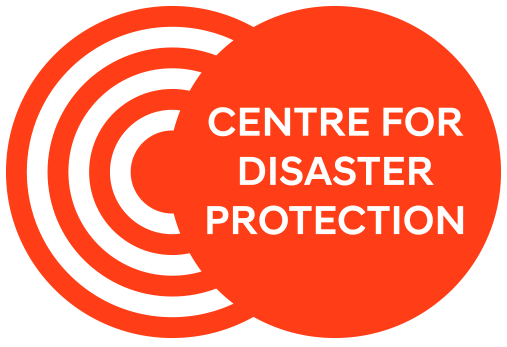Indonesia has the tools to protect against disasters – now it’s time to unlock their full potential
Every year, floods, droughts and earthquakes disrupt lives across Indonesia. The country already has a variety of disaster risk financing tools and social protection programmes in place, but as climate risks grow, these need to reach more people more effectively. New research by Resilience Development Initiative (RDI Global) explores how Indonesia can scale up and integrate its disaster risk financing systems to better protect more people.
Over the past year, the Centre for Disaster Protection supported RDI Global, a leading Indonesian think tank with an emphasis on local knowledge, to produce two interlinked studies. The studies examine how integrating adaptive social protection with disaster risk financing can create faster, more targeted responses, and how Indonesia can strengthen its existing disaster finance tools. Together, they offer a blueprint for reform grounded in local realities and global challenges.
Moving from pilots to systems – why this research is needed
Indonesia’s unique geography – an archipelago of over 17,000 islands, home to nearly 280 million people – ranks 2nd in the 2023 World Risk Index. Frequent floods, droughts, earthquakes, and volcanic eruptions make disaster risk financing and social protection critical for the nation’s resilience. And while tools exist, scaling them is key to reaching people faster and more effectively.
Disaster risk finance is no longer a new concept. Today, countries have access to a growing set of financial tools to help them prepare for and respond to disasters. Some have already delivered results. The next challenge is to make these tools part of everyday systems – used not only in pilots, but embedded in national plans, backed by real budgets, and ready to reach people quickly when disasters strike.
Three opportunities to strengthen Indonesia’s disaster risk financing and protection
The research identifies three areas where targeted improvements could significantly strengthen Indonesia’s disaster risk finance and social protection systems: improving the speed and alignment of funding; modernising policy and coordination frameworks; and enhancing the use of data for timely and targeted response.
Enabling money to move as fast as the disaster
Indonesia possesses a range strong of disaster finance tools – public emergency funds, insurance products and social assistance programmes – but they often work separately, causing delays and gaps in support. For example, after the 2018 Central Sulawesi earthquake, government on-call funds (Dana Siap Pakai) were quickly exhausted, slowing relief efforts. Private insurance, especially for small businesses and rural farmers, remains underused due to affordability and trust issues, and rarely coordinates with social protection.
Well-established social assistance programmes also struggle to scale rapidly after disasters because funding is tied to annual budgets and approval processes, which delays urgent cash transfers. The studies recommend aligning financial tools and social systems, creating mechanisms where funding is automatically or swiftly released in sync with disasters. This would speed up government aid delivery, reduce suffering, and help people recover faster.
Current policies for current challenges
Indonesia’s core disaster management law dates back to 2007, predating the country’s disaster risk financing strategy. This means it does not fully account for more recent financial instruments, such as contingent credit lines, risk pooling or climate-linked insurance. Several supporting regulations and various finance ministry decrees are also outdated, creating legal gaps that limit the integration of disaster financing with social protection.
Responsibility for disaster risk finance is still divided across multiple ministries, including the Ministry of Finance, BNPB (National Disaster Management Authority), and sectoral ministries, which can lead to overlapping efforts and gaps in coordination. There is great opportunity to strengthen inter-ministerial collaboration to develop clear, current shared mandates and frameworks which would enhance the country’s response to crises.
The Disaster Risk Financing and Insurance (DRFI) strategy presents a strong platform to unify finance, risk analysis, and social protection under a shared vision. By modernising its core policies, Indonesia can build a more agile and integrated disaster financing system that better serves its people.
Data that powers quick, targeted action
Indonesia’s vast geography and diverse population create unique challenges for disaster response making timely and accurate data even more crucial for effective planning and financing. The two studies highlight promising progress in this area. For example, efforts to integrate detailed sub-national risk profiles and updated socio-economic information – such as insights from Indonesia’s comprehensive household socio-economic survey – are sharpening the targeting of support to vulnerable communities.
Ongoing work to incorporate probabilistic risk models – models that estimate the likelihood and potential impact of different disaster scenarios – and localised data is improving how funds are allocated before and after disasters. Given Indonesia’s frequent exposure to earthquakes, floods, and volcanic eruptions, having granular, up-to-date risk and vulnerability data enables authorities to pre-position resources strategically and deploy aid quickly and effectively.
Building on this foundation, there is great potential to further enhance data systems that connect risk, vulnerability, and finance. Strengthening these links will allow Indonesia to respond with greater speed and precision when disasters strike.
Looking ahead
From the 2004 Indian Ocean tsunami to the growing number of climate-related disasters in recent years, Indonesia’s history has compelled the nation to invest deeply in disaster planning. Over time, the country has made strong progress by pooling resources, building expertise, and engaging a wide range of stakeholders, including the private sector.
Still, more must be done to boost resilience beyond tools,to withstand large-scale events. The next step is better coordination across ministries to protect vulnerable communities faster and more effectively. Indonesia also has strong potential to lead the way with an integrated adaptive social protection and disaster risk financing model, which could serve as an example for countries facing similar challenges.
This research shows technical fixes alone aren’t enough; deep understanding of local contexts and overcoming institutional, historical and political barriers are essential to taking disaster protection to the next level. The Centre’s partnership with RDI Global highlights the value of locally grounded research in guiding these conversations.
Read the full studies:

